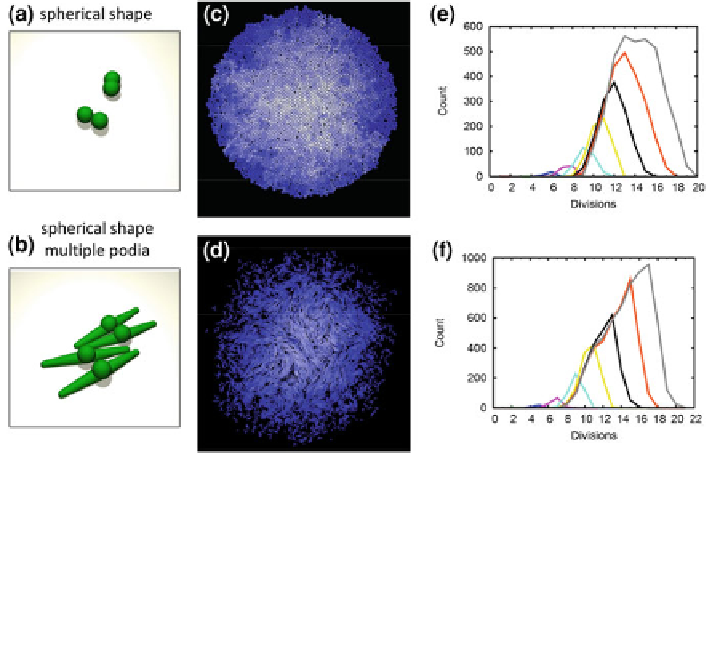Biomedical Engineering Reference
In-Depth Information
Fig. 7 Formation of an age distribution within expanding MSC clones. Comparison of a simple
model assuming spherical cell shape (a, c, e) with an advanced model assuming that cells do form
multiple podia (b, d, f). a, b Cell shape of the respective model. c, d Due to active contact
inhibition the growing cells in the centre of the populations stop proliferation. Accordingly, a
gradient in generation number is formed, here indicated by colour saturation. White cells are of
generation 8, and dark blue cells of generation 22. e, f Development of the distribution of
generation numbers in a growing colony over 8 days (blue: d2, magenta: d3, cyan: d4, yellow: d5,
black: d6, orange: d7, grey: d8). While the formation of an age gradient is a generic phenomenon,
the details of the distribution of generation numbers depend on the biophysical model.
prior to cell division and align to each other as is also experimentally observed in
proliferating MSCs in vitro (see Fig.
1
b, [
15
]). In this model cell migration is
accomplished by protrusion and traction forces exerted by model podia. The
number of podia is dynamically controlled by adaptation of the probabilities of
podium generation and inactivation. The migration phenotype largely differs
between cells with only one active podium (mostly ballistic movement with ran-
dom turns) and cells with multiple active podia (mostly stretched out and resting
with random reorientation moves). Details can be found in Hoffmann et al. [
38
].
Simulating monoclonal growth applying this podia model one observes results
comparable to those observed in the simple model. In particular this regards the
spatial distribution of cell generations (see Fig.
7
d). However, quantitative
differences can be observed depending on the choice of the model parameters,
which include parameters determining cell friction forces, podia lengths and
activation/deactivation rates as well as the parameters defining the sensitivity of
the cells to contact inhibition. Regardless of these differences the age structure
appears to be a generic feature of growing cell populations. Nevertheless, it has
been not considered in MSC model approaches so far.

Search WWH ::

Custom Search